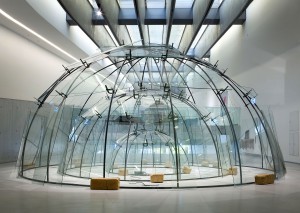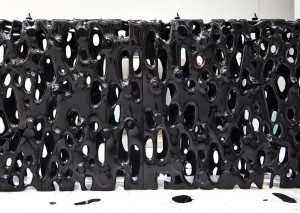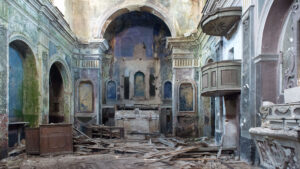- full price € 15 at the box office - € 14 online
- reduced price € 12 at the box office - € 11 online
– for young people aged between 18 and 25 (not yet turned 25);
– for groups of 15 people or more;
– La Galleria Nazionale, Museo Ebraico di Roma ticket holders;
– upon presentation of ID card or badge: Accademia Costume & Moda, Accademia Fotografica, Biblioteche di Roma, Centro Sperimentale di Cinematografia, Enel (for badge holder and accompanying person), FAI Fondo Ambiente Italiano, Feltrinelli, Gruppo FS, IN/ARCH Istituto Nazionale di Architettura, Sapienza Università di Roma, LAZIOcrea, Palazzo delle Esposizioni, Amici di Palazzo Strozzi, Accademia Nazionale di Santa Cecilia, Scuola Internazionale di Comics, Teatro Olimpico, Teatro dell’Opera di Roma, Teatro di Roma, Università degli Studi di Roma Tor Vergata, Youthcard; - August promo for Lazio residents € 7
valid from August 1st to August 31st, upon presentation of an identity document verifying residency in the Lazio Region
- open € 18
valid for one year from the date of purchase
- free
– minors under 18 years of age;
– myMAXXI cardholders;
– on your birthday presenting an identity document;
– upon presentation of EU Disability Card holders and or accompanying letter from hosting association/institution for: people with disabilities and accompanying person, people on the autistic spectrum and accompanying person, deaf people, people with cognitive disabilities and complex communication needs and their caregivers, people with serious illnesses and their caregivers, guests of first aid and anti-violence centres and accompanying operators, residents of therapeutic communities and accompanying operators;
– MiC employees;
– journalists who can prove their business activity;
– European Union tour guides and tour guides, licensed (ref. Circular n.20/2016 DG-Museums);
– 1 teacher for every 10 students;
– AMACI members;
– CIMAM International Committee for Museums and Collections of Modern Art members;
– ICOM members;
– from Tuesday to Friday (excluding holidays) European Union students and university researchers in art history and architecture, public fine arts academies (AFAM registered) students and Temple University Rome Campus students;
– IED Istituto Europeo di Design professors, NABA Nuova Accademia di Belle Arti professors, RUFA Rome University of Fine Arts professors;
– upon presentation of ID card or badge: Collezione Peggy Guggenheim a Venezia, Castello di Rivoli Museo d’Arte Contemporanea, Sotheby’s Preferred, MEP – Maison Européenne de la Photographie;
Collection
MAXXI’s Collection of Art and Architecture represents the founding element of the museum and defines its identity. Since October 2015, it has been on display with different arrangements of works.
other upcoming events
18 Sep 2025 06.00 pm
books at MAXXIPiù turismo per tutti?by Edoardo Colombo and Paolo Verri
24 Sep 2025 05.00 pm
MAXXIperTUTTIIl Museo si raccontaguided tours in LIS
25 Sep 2025 07.00 pm
Le ConversazioniRoberto Andòwith Antonio Monda
26 Sep 2025 07.00 pm
musicThe Scoop Jazz Band Noi e lo stadio
1 Oct 2025 06.00 pm
books at MAXXISenza riparo. Sei tentativi di leggere il presenteby Guido Mazzoni










































Thursday 11 March 2010
Rome, National Gallery of Modern Art
Presentation of the catalogue National Gallery of Modern Art & MAXXI
The collections 1958 – 2008
edited by Stefania Frezzotti, Carolina Italiano and Angelaandreina Rorro
In the presence of the Minister for Cultural Heritage and Activities Sandro Bondi
introduced by
Roberto Cecchi General secretary of the Ministry for Cultural Heritage and Activities
Mario Lolli Ghetti General Director of PaBAAC
Pio Baldi President of the MAXXI Foundation
speakers
Luca Massimo Barbero Director of MACRO
Gabriella Belli Director of MART
Silvia Bordini Lecturer in the history of contemporary art at La Sapienza University of Rome
Maria Vittoria Marini Clarelli Superintendent of the National Gallery of Modern Art
Anna Mattirolo Director of MAXXI Art
The two-volume catalogue brings together the complete collection of contemporary art works acquired by the National Gallery of Modern Art and the National Museum of XXI Century Arts.
1,350 works, all reproduced in colour and almost all accompanied by a detailed description, represent the fruit of almost fifty years of public collecting aimed at conserving, documenting and presenting Italian and international art.
In particular, the recent MAXXI collection – launched in 2002 – comprises 299 works that are the fruit of acquisitions, commissions, thematic competitions, prizes, donations and loans. It includes pieces by Alighiero Boetti, Francesco Clemente, Anish Kapoor, William Kentridge, Mario Merz, Giuseppe Pennone, Cristiano Pintaldi, Gerhard Richter, Andy Warhol and many others.
The catalogue has been conceived as an alphabetical compendium by artist, equipped with analytical and alphabetical indexes to aid research. A final series of entries is devoted to works that because of their specific nature (for example artist’s books) or their particular provenance (for example, naval furnishings) were worthy of treatment taking into account these differences.
Two introductory essays by Anna Mattirolo, director of MAXXI Art, and Maria Vittoria Marini Clarelli, Superintendent of the National Gallery of Modern Art, provide the reader with the necessary critical support for a reconstruction of the historical-artistic scenario in relation to the two museums’ acquisition policy.